Fear – Lent Day 25
Lenten Recipe
Recipe 25: Curry Butternut Squash
Lenten Journey Day 25 – Fear
By this 25th day of the Lenten Journey we realize many things have changed in our lives. It may seem as if our surroundings have changed when actually we are now perceiving things differently. We have a broader understanding of our prayer life. We communicate with God and with our self. We understand our fasting as a means of discipline, and of course, our giving – reaching out to others with compassion – as an articulation of faith. On this 25th day of Lent, we understand that beyond these 40 days, there is the journey of life. What we gain from Lent, we will carry for the rest of our life.
These past few days we have studied the story of the Dishonest Steward and contemplated on the theme of stewardship, that is, being entrusted by another to look over assets. We are entrusted by God to look over His greatest gift to us: the life that we live. We are managers of that life.
Remember that in the story of the Dishonest Steward, we find a person who is commended for his shrewdness. Shrewdness is one man’s talent, while others may shy away from such expressions because of fear. That fear, in turn, prevents us from maximizing our potential. The fear of the unknown is high on the list of fears, along with the fear of the self, the fear of being put down. There are so many dimensions to fear, and whatever they may be, we realize that fear prevents us from maximizing our potential. Fear is the hurdle to overcome. The obstacles to win the race of life are many. Overcoming fear is our first step. Think about it in your life – all the dreams that you have, all of them are attainable, so what prevents you from reaching those goals if not fear?
In our churches we cover the altar during the Lenten season. That curtain symbolizes sin, the separation between us and God due to sin. Because of our imperfection, we sin. And yet, perhaps that curtain can best be described as fear, as the fear that really prevents us from seeing the beauty that is all around us. Seeing the potential we have within us.
Beyond the parable of the Dishonest Steward, Jesus uses other parables to explain stewardship to us. Among them he speaks of stewards who are fearful; that is, people who are entrusted with life but fear to explore it. One such parable speaks of three men who are entrusted with different amounts of money. To the first, $10,000 dollars is given; to the second, $5,000; and to the third, $1,000. When an accounting is required – “What did you do with the money that I gave you? – the first one says, “I took the $10,000 and I invested it. And I took some risks with it, but here it is. I have produced an additional $10,000.” The second man did the same thing. He took the $5,000 and he multiplied it and gave back $10,000 – “Here’s $5,000, and here’s $5,000 more that I invested and am giving back to you!” But the third of these stewards was fearful. To him was given $1,000. And he was scared. He was scared of humiliation. He was fearful that he might be condemned if anything happened to that money. Rather than understanding that money as a tool, he took it and kept it in his pocket, as if it had intrinsic worth in itself. When asked for an accounting of his stewardship, he reached into his pocket and gave back the $1,000. Nothing was lost! Not a penny! But he was condemned. He was condemned because what was given to him was kept and not utilized. He was scared to use it. He had that fear that each and every one of us possess: the fear of succeeding.
The reasons for those fears are many. They go back to our childhood and to our relationships with people who have demanded of us. Some of them are because of physical inabilities, handicaps or illnesses. They are all the same, and each of them accordingly prevent us from realizing our dreams, from reaching the goals that we set for ourselves and more importantly, from reaching the goals that God wants us to set for ourselves.
Each of the stewards in this story are given different amounts to remind us that life deals out different hands to different people. Some may have more, and others may have less, but in each case we have a responsibility to take what is given to you and maximize it. I invite you today to really think about that stewardship that God has entrusted us with – the life that you have – to end the fears that prevent you from really fulfilling the dreams are inside of your heart. There are so many beautiful things all around you, and I invite you to look beyond the material gains. This is not an exercise in prosperity but an exercise in fulfilling the dreams of your heart and of reaching the potential that you have.
During this Lenten Journey we realize that the curtains in front of us need to be drawn, and that we do want to see the beauty in life. Because we want it, we know that God has placed that desire in our hearts. Let us seek the beauty that God has set up all around us and know that with His help those potentials can be realized and actualized.
We now pray the prayer of St. Nerses Shnorhali
Protector of your Creatures, by the sign of your holy cross, keep my soul and body from the allurement of sin, from the temptation of the devil and unjust people, and from all perils of soul and body. Have mercy upon all your creatures, and upon me, a great sinner. Amen. (I Confess with Faith, 14/24)
Image by Anemone123 from Pixabay


 Of all the topics we have discussed during the Lenten season, did you ever think we would talk about “schmoozing?”
Of all the topics we have discussed during the Lenten season, did you ever think we would talk about “schmoozing?” 
